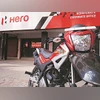During a recent town hall with Hero MotoCorp’s (HMC) workforce — around 5,000 employees globally — Executive Chairman Pawan Munjal’s message was clear: underperformance would not be accepted.
The meeting took place against a backdrop of mounting challenges for India’s largest two-wheeler manufacturer by volume. The company’s market share has dropped to its lowest point in a decade, key executives have departed, and its newly launched models have struggled to gain traction. Meanwhile, its electric vehicle (EV) business has yet to make a significant impact, according to a report by The Economic Times.
With competition intensifying, Munjal underscored that Hero MotoCorp could not afford to become complacent.
Despite maintaining its leadership position in the two-wheeler market, selling 5.4 million units in 2024 (a 2.5 per cent increase from 2023, per Vahan data compiled by the Federation of Automobile Dealers Associations), competitors are closing in. Honda Motorcycle and Scooter India (HMSI), the second-largest player, sold 4.7 million units in the same period, marking a 20 per cent year-on-year increase. This narrowed the volume gap between the two companies from 1.4 million units in 2023 to just 700,000 units in 2024.
Hero’s market share in the two-wheeler segment declined to 28 per cent in Q2 FY24-25, continuing a downward trend from 39 per cent in FY2015-16. Although it recovered slightly to 29 per cent in Q3, data from Nomura Research and the Society of Indian Automobile Manufacturers (SIAM) shows that its overall share for 2024 fell to 29.02 per cent from 31.33per cent in 2023. The decline persisted into January 2025, with market share slipping to 26.92per cent, compared to 28.08 per cent a year earlier, the The Economic Times mentioned citing data from Fada Research.
Also Read
Low revenue
The company’s new models accounted for 20 per cent of TVS’s sales, which contributed only 7 per cent to HMC’s revenue in the first nine months of FY25.
Meanwhile, TVS’s market share climbed to 19 per cent in Q3 FY24-25, its highest level since 2015-16, when it stood at 13 per cent. HMSI’s share has remained between 26-29 per cent since 2015-16, ending Q3 FY24-25 at 26 per cent.
Hero derives more than half of its sales from rural markets, which saw slower growth (3.85 per cent year-on-year) than urban markets (4.54 per cent) in January 2025, per FADA data.
Stock performance and financial standing
Hero’s stock has fallen 18 per cent over the past year, while Bajaj Auto has gained 8 per cent and TVS Motor has surged 19 per cent. Additionally, HMC lags behind its key competitors in three-year compounded annual growth rate (CAGR) for both sales and profits. Bajaj and TVS posted three-year sales CAGRs of 26 per cent and 17 per cent, respectively, while Hero recorded just 7 per cent, the news report mentioned.
For profit CAGR, Bajaj reported 17 per cent and TVS 39 per cent, while Hero stood at 11 per cent. Similarly, in stock CAGR over three years, Hero’s 14 per cent increase pales in comparison to Bajaj’s 36 per cent and TVS’s 57 per cent.
Leadership shake-up
Last month, HMC informed stock exchanges of the resignations of CEO Niranjan Gupta and Chief Business Officer Ranjivjit Singh. Gupta, who joined the company in 2017 as CFO, had been elevated to CEO in May 2023. Under his leadership, Hero focused on expanding its premium motorcycle portfolio and entering the EV market through the Vida brand.
However, the company has struggled to make significant progress in these segments. Despite entering the EV market in mid-2022, HMC holds less than a 2 per cent market share. In January 2025, it sold just 1,615 electric scooters, whereas market leader Ola Electric sold 24,336 units. Nevertheless, Hero has secured a stake in the segment through its investment in Ather Energy, where it now owns 40 per cent, the report said.

)